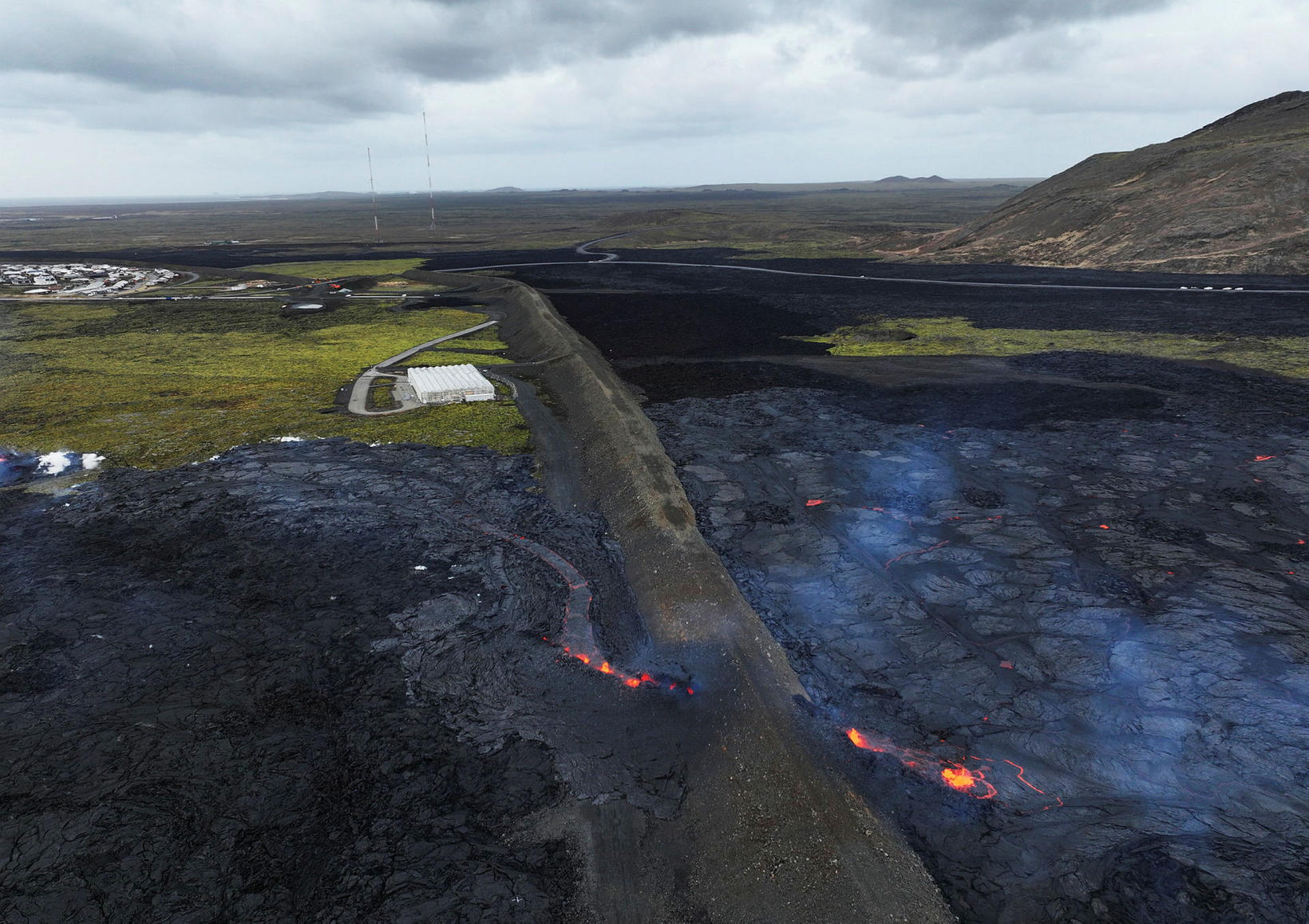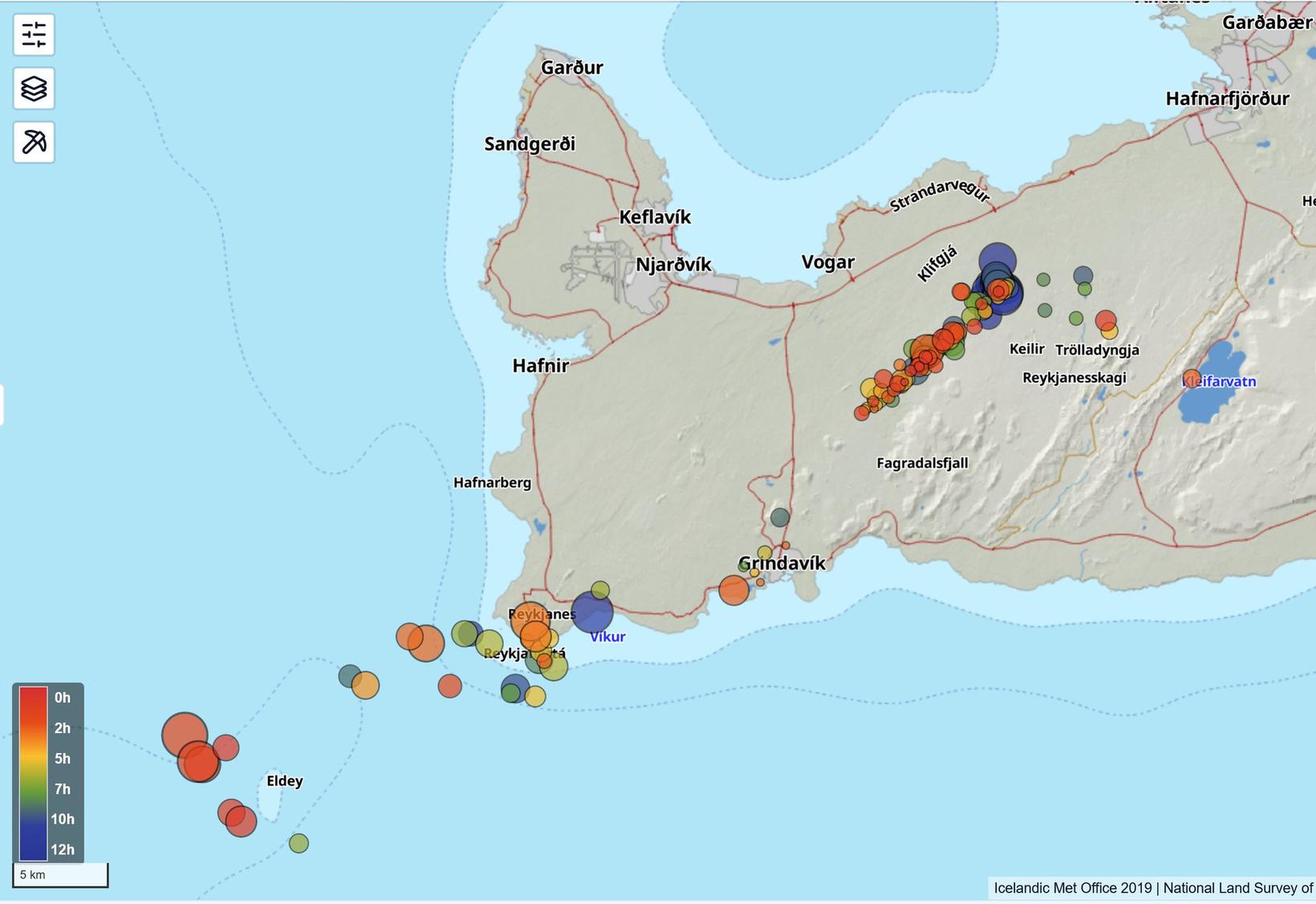Volcanic activity subsides, but region remains unstable
No activity has been seen at the volcanic fissure on the Sundhnúkagígaróði since midday yesterday. mbl.is/Eggert Jóhannesson
There has been no volcanic activity on the fissure at Sundhnúkagígar since midday yesterday. However, embers continue to smolder in the newly formed lava, and the area remains unstable and hazardous, according to a statement from the Icelandic Meteorological Office.
By 9 pm last night, seismic activity on the Reykjanes Peninsula had started to decline. Meanwhile, aftershocks at Reykjanestá have shifted southwest toward Eldey, and further tremors are expected as the region recovers from the recent unrest.
2,800 earthquakes recorded in 24 hours
Despite the slowdown in volcanic activity, seismic movements remain intense, with around 2,800 earthquakes detected on the Reykjanes Peninsula and Reykjanes Ridge in the past 24 hours, all linked to the recent magma intrusion.
Many of these tremors were felt in populated areas, with reports coming in from Hrútafjörður to Kirkjubæjarklaustur.
As the night progressed, earthquakes became more scattered along the magma corridor, spanning from Mt. Stóra-Skógfell in the south to Vatnsleysuheiði in the north, with depths ranging from 4 to 6 kilometers.
While the situation is evolving, experts urge caution in the area as seismic activity remains unpredictable.



/frimg/1/58/37/1583777.jpg)





